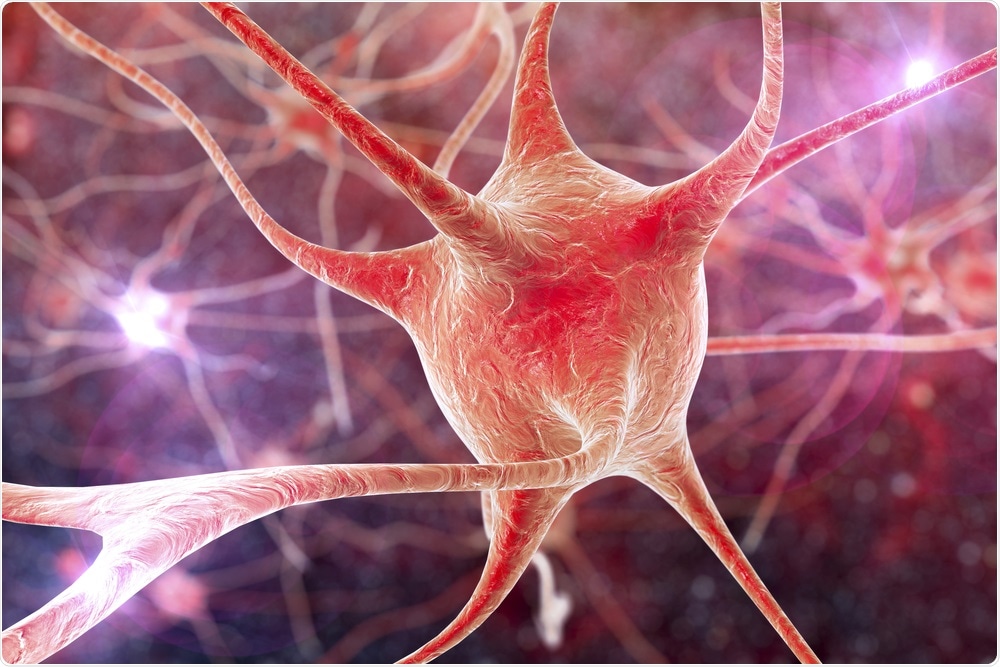Hirsutella sinensis (HS), a Chinese caterpillar fungus that is used in traditional Chinese medicine has been found to minimize motor neuron loss in mice models of amyotrophic lateral sclerosis (ALS). The fungus was also found to extend the lifespan of mice, marking a promising development in discovering therapeutic treatment for ALS.
 Kateryna Kon | Shutterstock
Kateryna Kon | Shutterstock
Researchers at the Dalian Medical University in China aimed to assess whether the symptoms of ALS, in particular, the signs of neuroinflammation seen in the condition, may be improved with Hirustella sinensis treatment.
Amyotrophic lateral sclerosis is the name of a group of rare, neurological diseases characterized by motor neuron death. The neurons affected by these diseases control voluntary muscle movement, which includes chewing, walking, and talking.
Early symptoms of the disease are muscle weakness and stiffness, and eventually, all muscles operating through voluntary control are no longer able to function normally. This often leaves those living with the disease unable to breathe properly, causing respiratory failure to be the most common cause of death in ALS cases.
There is currently no cure for the progressive disease, and the molecular mechanisms contributing to the progression of the disease are not yet fully understood.
However, scientists believe microglia, nerve cells usually responsible for protecting neurons, become overactive. This leads to brain inflammation, a symptom strongly associated with ALS.
“Although the pathophysiology of amyotrophic lateral sclerosis (ALS) is still not completely understood, the deregulated microglia polarization and neuroinflammation have been shown to contribute to the pathogenesis and progression of this disease,” the researchers wrote.
Hirustella sinensis is a fungus used in ancient medicine
The scientists investigated the effects of Hirustella sinensis, a fungus that grows on insects, on ALS. A strictly regulated herbal remedy for its high arsenic content when found in nature, HS is described as a “unique fungus growing on caterpillars and is a highly valued tonic medicine claimed to treat a wide range of disorders, such as asthma, chronic kidney disease, and kidney transplant recipients,” in the study.
“Cordycepin (3’-deoxyadenosine), one of the major chemical components of HS, has been identified to exert anti-oxidative, anti-inflammation, antitumor, and neuroprotective effects,” the study continues.
“Moreover, previous studies have further revealed a suppressive role of cordycepin on […] microglia activation and inflammation in vitro.”
Hirustella sinensis shows ‘promising therapeutic potential’
Researchers treated 28 mice with ALS with H. sinensis via deposits into the stomach, and the effects on their lifespan and motor behavior was monitored. Pathological changes in skeletal muscles and motor neurons were also evaluated. 28 mice were also given drinking water instead of a dose of HS to compare the effects of the fungus.
Motor function was assessed with a rotarod test, in which the mice had to stay on a rotating road for five minutes, and imaging techniques were employed to show changes in the mice’s muscles and spinal cord neurons.
The researchers found that mice treated with HS lived for 143.7 days, while mice treated with only drinking water lived for 126.8 days. Additionally, loss of spinal cord motor neurons was reduced, and changes in muscle fibers in the leg muscles, such as muscle atrophy or shrinkage, was also improved.
The researchers conclude:
The therapeutic effects of HS against ALS might be mediated by its activities of anti-oxidative stress [cellular damage that occurs as a consequence of high levels of oxidant molecules] and anti-inflammation through promoting transition of microglia polarization from [an active to stable state]. All these findings predicted a promising therapeutic potential of HS for ALS.”
Source:
Carvalho, J. Fungus Used in Chinese Medicine Reduces Motor Neuron Loss and Prolongs Life in Mouse Model of ALS, Study Shows. ALS News Today. 23rd June 2019. https://alsnewstoday.com/
Journal reference:
French, P. W., et al. (2019). Fungal Neurotoxins and Sporadic Amyotrophic Lateral Sclerosis. Neurotoxicity Research. https://link.springer.com/article/10.1007%2Fs12640-018-9980-5.